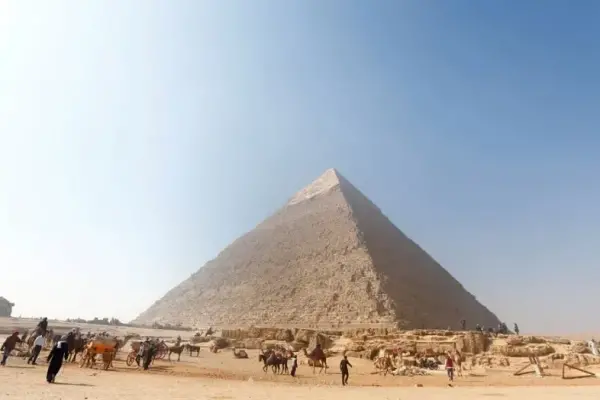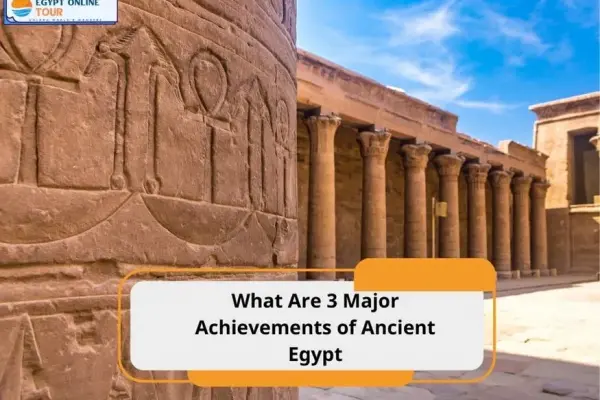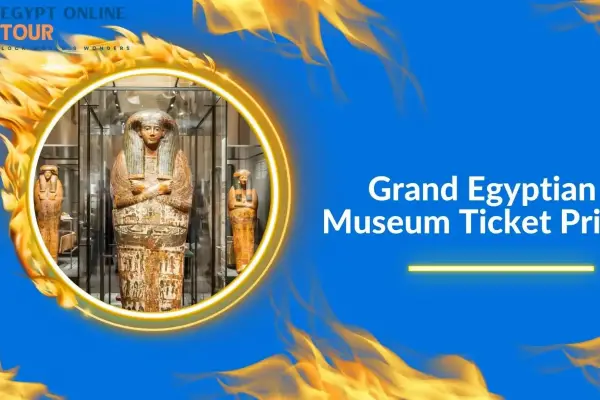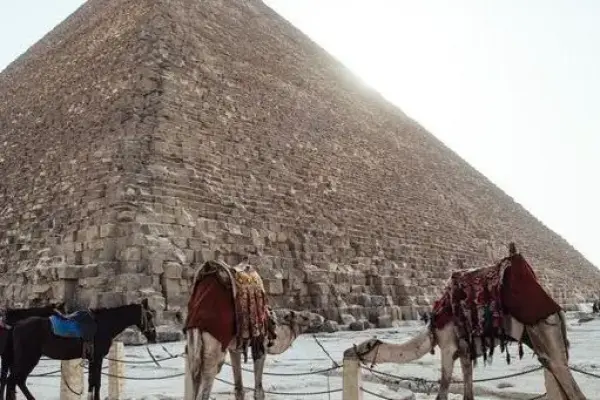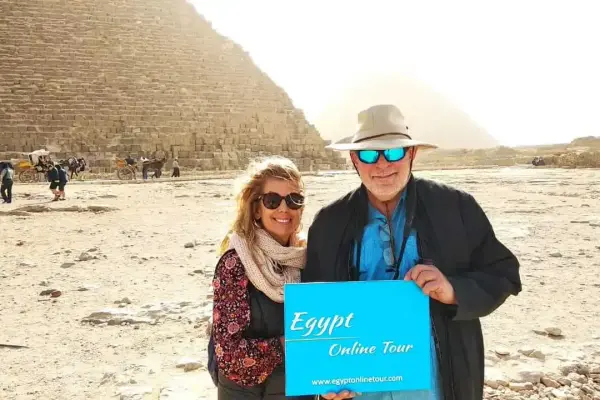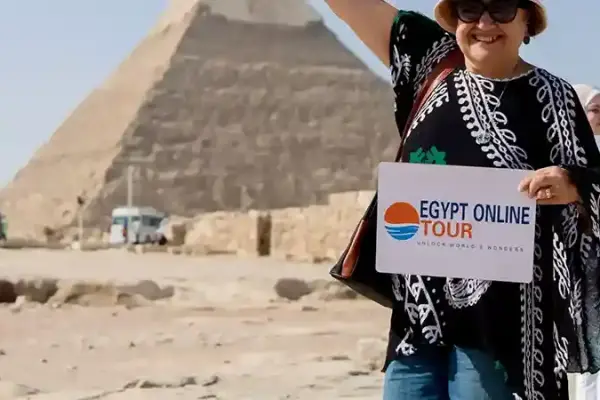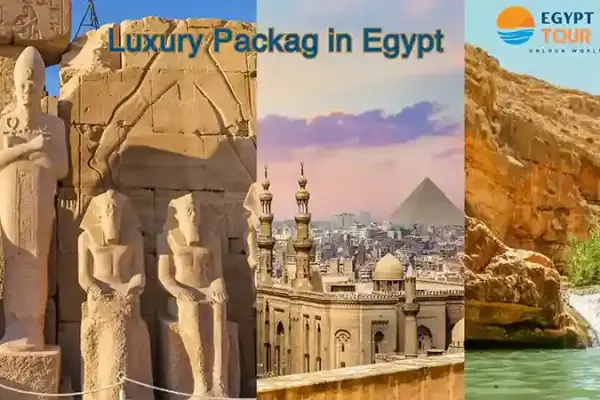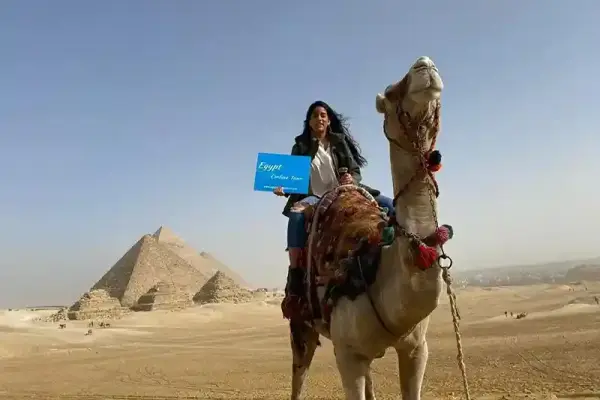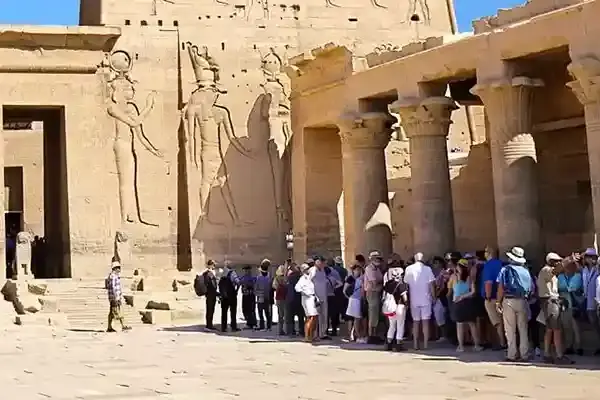What are 3 major achievements of ancient Egypt? This extraordinary civilization shaped history and continues to inspire us today. Did you know that the 365-day calendar was created by the ancient Egyptians? According to National Geographic, their innovations in architecture, writing, and agriculture laid the foundation for modern society. Over 8 million tourists visited Egypt in 2023, according to Egypt Travel, to explore the timeless legacy of their wonders. Curious about these incredible accomplishments? Let’s uncover how they continue to influence the world!
Table of contents [Show]
-
How Much Did the Ancient Egyptians Know About Their Cultural Origins?
- 1. Deep Connection to Mythology
- 2. Preservation Through Hieroglyphs
- 3. Role of Priests and Scholars
- 4. Genealogy and Divine Ancestry
- 4. Oral Traditions and Storytelling
- 5. Architectural Symbolism
- 6. The Influence of Creation Myths
- 7. Connection to the Nile
- However, it's important to acknowledge the limitations of their knowledge:
- Examples about myths
- Is There Still Any Ancient Egyptian Culture Alive Today?
- What Are 3 Major Achievements of Ancient Egypt?
- Which of the following were contributions from Ancient Egypt?
- What Are the Contributions of Ancient Egyptian Education Today?
- What Are Great Innovations in Old Kingdom Egypt?
- Ancient Egyptian Inventions Still Used Today
- Summary
How Much Did the Ancient Egyptians Know About Their Cultural Origins?
The Ancient Egyptians profoundly understood their cultural origins, blending mythology, religion, and historical traditions. Their deep connection to the gods, the Nile River, and their land shaped their identity and worldview. Through hieroglyphic records, oral storytelling, and monumental architecture, they preserved their rich heritage for future generations. Below, we explore how the Ancient Egyptians maintained and interpreted their cultural roots:
1. Deep Connection to Mythology
Ancient Egyptians believed their civilization was created by gods such as Ra, Osiris, and Isis. These divine figures formed the foundation of their cultural origins and religious beliefs.
2. Preservation Through Hieroglyphs
They documented their history and beliefs using hieroglyphs, inscribing them on temple walls, tombs, and papyrus. These records served as invaluable tools for preserving their identity.
3. Role of Priests and Scholars
Priests played a vital role in preserving sacred texts and rituals, ensuring the continuation of knowledge about their divine and cultural origins.
4. Genealogy and Divine Ancestry
Pharaohs were considered descendants of gods, combining divine authority with governance. This belief reinforced their connection to sacred origins.
4. Oral Traditions and Storytelling
Vibrant oral traditions passed down stories of their history and beliefs. These narratives emphasized the roles of gods and rulers in shaping their civilization.
5. Architectural Symbolism
Monuments like pyramids and temples reflected their creation myths and belief in eternity. These structures were physical manifestations of their cultural identity. To experience these iconic sites, consider this 8 Days Cairo to Abu Simbel and Back Overland tour for a journey through Egypt’s timeless wonders.
6. The Influence of Creation Myths
Creation stories, such as the Heliopolitan myth, explained their origins and shaped their understanding of existence.
7. Connection to the Nile
The Nile River, seen as the lifeblood of their civilization, symbolized prosperity and survival. Its fertile lands reinforced their connection to their origins.
However, it's important to acknowledge the limitations of their knowledge:
Blending Myth and Reality: Their accounts often combined mythology with history, making it challenging to distinguish between factual events and religious beliefs.
Limited External Perspective: Their understanding was primarily focused on their civilization, with limited knowledge of other cultures or global history.
Incomplete Records: Many texts and artifacts have been lost or remain undeciphered, leaving gaps in our understanding of their knowledge about their origins.
The Ancient Egyptians exhibited a remarkable awareness of their cultural origins through their mythology, rituals, and historical documentation. Although their knowledge sometimes blended fact with belief, it provided a deep sense of identity and continuity. Their achievements in preserving their heritage inspire wonder to this day, offering insights into one of history’s most extraordinary civilizations.
Examples about myths
Ancient Egypt, a civilization renowned for its magnificent monuments, intricate hieroglyphs, and sophisticated religious beliefs, has captivated historians and enthusiasts for centuries. Central to their worldview were elaborate creation myths that explained the origins of the cosmos and their place within it. These myths, varying across regions and periods, offer a fascinating glimpse into the ancient Egyptians' understanding of their cultural origins.
The Hermopolitan Ogdoad
In the city of Hermopolis, the dominant creation myth revolved around the Ogdoad, a group of eight primordial deities. These deities embodied the chaotic forces that existed before creation, including:
Nun and Naunet: Representing the primordial waters.
Heh and Hauhet: Symbolizing infinity.
Kek and Kauket: Embodying darkness.
Amun and Amaunet: Representing hiddenness.
According to the Metropolitan myth, these eight deities emerged from the swirling primordial waters and, through their interactions, gave birth to a mound of earth. From this primeval hill arose the sun god Ra, who illuminated the world and initiated the process of creation.
The Memphite Creation Myth
In Memphis, the ancient capital of Egypt, a different creation myth prevailed. This myth centered on Ptah, the patron deity of the city, who was revered as a creator god and a divine craftsman. Unlike the Ogdoad, which represented primordial forces, Ptah was associated with intellect and speech. The Memphite creation myth emphasizes the power of these faculties, asserting that Ptah brought the world into being through his thoughts and words. This concept highlights the importance of language and creative thought in the ancient Egyptian worldview.
The Creation Myth of Atum
Another prominent creation myth involved the god Atum, a self-created deity often depicted as a serpent or a man wearing a double crown. In the Heliopolitan creation myth, Atum emerged from the primordial waters, Nun, and through an act of self-stimulation, created Shu (air) and Tefnut (moisture). These two deities then gave birth to Geb (earth) and Nut (sky), who in turn produced Osiris, Isis, Set, and Nephthys. This group of nine deities, known as the Ennead, formed the core of the Heliopolitan pantheon.
Is There Still Any Ancient Egyptian Culture Alive Today?
Ancient Egypt, renowned for its remarkable achievements, left a cultural legacy that continues to influence modern Egyptian life. From timeless crafts to enduring symbols, many traditions and practices from this great civilization remain alive today. These elements have seamlessly blended with modern society, showcasing the richness of Egypt’s heritage. Below are the ways ancient Egyptian culture continues to thrive in contemporary Egypt:
1. Traditional Crafts
Ancient crafts such as pottery, textile weaving, and jewelry-making are still practiced using techniques passed down through generations.
2. Religious Symbols
Iconic symbols like the ankh (key of life) and scarab beetle are widely used in modern jewelry and as protective amulets.
3. Seasonal Festivals
Celebrations like Sham El-Nessim, marking the arrival of spring, have roots in ancient Egyptian traditions and are still widely observed.
4. Architectural Influence
Modern architecture in Egypt incorporates elements inspired by ancient temples, such as columns and intricate hieroglyphic designs.
5. Agricultural Practices
Farmers continue to rely on the Nile for irrigation, a practice that echoes the techniques developed by ancient Egyptians.
6. Language Connections
While the ancient Egyptian language is no longer spoken, many words in Egyptian Arabic stem from ancient linguistic roots.
7. Artistic Inspiration
Contemporary artists often draw inspiration from ancient motifs, including depictions of pharaohs, gods, and mythological symbols.
8. National Pride
Egyptians take pride in their heritage, celebrating it through museums, cultural festivals, and tourism that highlight their ancient history.
9. Folklore and Legends
Oral traditions, some rooted in ancient times, remain part of the storytelling culture, preserving Egypt’s historical narratives.
10. Connection to the Nile
The Nile remains central to Egyptian life, symbolizing prosperity and continuity, just as it did for their ancestors.
11. Folklore and Traditions
Plus, some ancient Egyptian festivals and celebrations, like Sham el-Nessim (a spring festival), are still observed in modern Egypt. Moreover, these traditions connect people to their ancient roots.
Ancient Egyptian culture is far from lost. Its influence permeates modern practices, traditions, and symbols, creating a vibrant connection between the past and present. This enduring legacy serves as a testament to the timelessness of one of the world’s greatest civilizations.
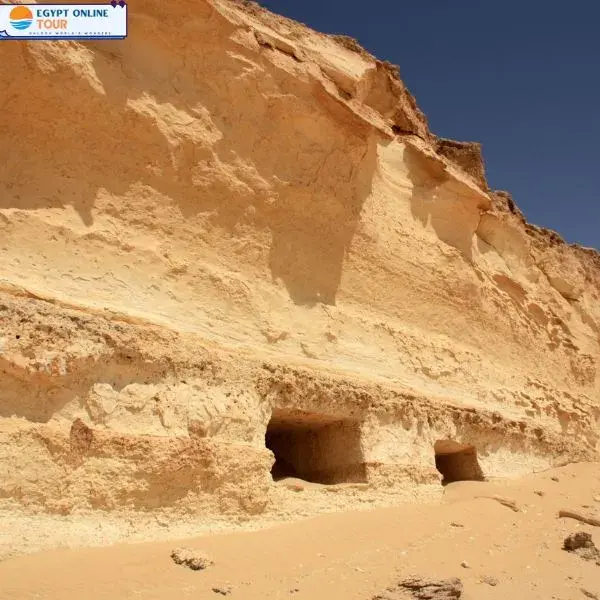
What Are 3 Major Achievements of Ancient Egypt?
Ancient Egypt, one of history’s most advanced civilizations, achieved extraordinary milestones that still inspire the world. Known for their remarkable ingenuity, the Egyptians mastered architecture, writing, and agriculture in ways that shaped human history. Their legacy continues to fascinate researchers, travelers, and history enthusiasts. Below are three of their most significant achievements:
The Pyramids of Giza
These awe-inspiring structures, built over 4,500 years ago, are a testament to ancient Egypt’s architectural brilliance. The Great Pyramid of Giza, originally 481 feet, was the tallest man-made structure for nearly 4,000 years. Its construction involved precise planning and advanced engineering techniques, showcasing the Egyptians’ unmatched mastery of geometry and logistics. For a deeper exploration of the pyramids and their legacy, check out this 8 Days Pyramids & the Nile by Air tour to experience these wonders firsthand.
Hieroglyphic Writing System
Hieroglyphics is a highly advanced writing system that was created by the ancient Egyptians. This unique form of communication combined symbolic and phonetic elements, enabling the documentation of religious texts, administrative records, and historical events. Hieroglyphs, often inscribed on temple walls and papyrus, preserved their culture and achievements for thousands of years, offering modern historians invaluable insights into their civilization.
Irrigation and Agriculture
The Egyptians skillfully utilized the annual flooding of the Nile River to revolutionize agriculture. They constructed canals, basins, and dikes to control water flow, ensuring fertile lands and abundant harvests. This efficient irrigation system not only sustained their growing population but also formed the backbone of their economy, making ancient Egypt one of the first civilizations to achieve agricultural self-sufficiency.
These achievements reflect ancient Egypt’s profound contributions to architecture, communication, and sustainable development. Their innovations have left an enduring impact on human civilization and remain a source of inspiration for future generations.
Which of the following were contributions from Ancient Egypt?
Ancient Egypt, a civilization that thrived for thousands of years, left an indelible mark on human history. Their groundbreaking innovations laid the foundation for numerous modern practices, influencing areas like science, architecture, art, and medicine. Below are the key contributions of ancient Egypt that continue to inspire the world today:
Hieroglyphic Writing System
Ancient Egyptians created one of the earliest writing systems, hieroglyphics, to document religious texts, historical events, and daily life. These intricate symbols preserved their culture for millennia and paved the way for modern communication.
Pyramids and Architecture
The Pyramids of Giza showcase extraordinary engineering skills and are among the three major achievements of ancient Egypt. Their precise construction continues to awe architects and engineers worldwide.
Mathematics and Geometry
Egyptians developed advanced mathematical concepts, including geometry, which was essential for building monuments, managing agriculture, and creating their calendar system.
Medicine and Surgery
They pioneered surgical techniques, created remedies for diseases, and documented their knowledge in texts like the Ebers Papyrus, demonstrating advanced medical understanding.
Astronomy and Timekeeping
Ancient Egyptians observed celestial patterns to develop a 365-day calendar, which helped them track agricultural seasons and guide navigation.
Irrigation and Agriculture
They designed irrigation systems with canals and basins to control the Nile’s waters, ensuring sustainable agriculture and supporting population growth.
Art and Symbolism
Their art, characterized by symbolic and realistic elements, reflected their beliefs, daily life, and social hierarchy. These techniques still influence modern artistic expression.
Religious Beliefs
Egyptian mythology deeply influenced later civilizations, including the Greeks and Romans, shaping their understanding of gods, creation, and the afterlife.
Papyrus for Record-Keeping
They were among the first to create paper-like material from the papyrus plant, revolutionizing documentation and communication across generations.
Shipbuilding and Exploration
Egyptians built sophisticated ships for trade and exploration, connecting them with neighboring civilizations and facilitating cultural exchange.
Ancient Egypt’s contributions reflect unparalleled innovation and a lasting legacy. From the majestic pyramids to revolutionary advances in medicine and astronomy, their achievements continue to shape the modern world. This enduring influence underscores their position as one of history’s greatest civilizations.
Read more about: Architectural achievements of Ancient Egypt
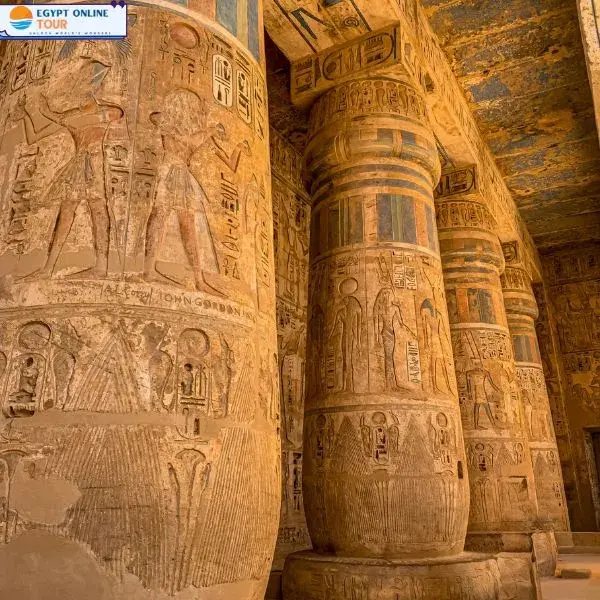
What Are the Contributions of Ancient Egyptian Education Today?
Ancient Egyptian education shaped knowledge systems that resonate even today. Their structured approach to learning, focus on literacy, and specialized training deeply influenced modern education. From mastering hieroglyphics to instilling moral values, ancient Egypt laid the groundwork for many practices we rely on today. Below are key contributions that continue to impact modern education:
Structured Learning System
Ancient Egyptians established formal schools for the elite, teaching literacy, mathematics, and religious texts. This model inspired modern educational institutions.
Value of Literacy
Scribes played vital roles in administration and record-keeping. Their focus on reading and writing reflects the foundation of today’s education.
Specialized Training
They provided specialized education in fields like medicine, engineering, and the arts. This approach mirrors modern vocational and professional training.
Moral and Ethical Development
Education emphasizes values like honesty, respect, and responsibility. These teachings shaped societal norms and character development.
Knowledge Preservation
Papyrus scrolls acted as early libraries, preserving knowledge for future generations. These collections resemble modern archives.
Focus on Lifelong Learning
Egyptians valued wisdom and learning throughout life. This belief aligns with the concept of continuous education today.
Mathematics and Geometry
Their innovations in geometry supported architecture and trade, forming a foundation for modern mathematical applications.
Gender-Specific Education
Some women accessed education, reflecting early inclusivity in learning, although opportunities were limited compared to men.
Ancient Egypt’s approach to education highlights its timeless commitment to learning and innovation. Their influence continues to shape modern education systems, emphasizing the importance of structured learning, moral values, and knowledge preservation.
Maybe like to read: Egyptian Empire Time Period
What Are Great Innovations in Old Kingdom Egypt?
The ancient Egyptians, settled along the life-giving Nile River, were a people of remarkable ingenuity. The Old Kingdom period, lasting from approximately 2686 to 2181 BC, saw groundbreaking advancements in various fields. From awe-inspiring architecture to innovative timekeeping and artistic expression, their achievements shaped their civilization and left a legacy that inspires us today.
Key Innovations of the Old Kingdom
Pyramids: Architectural Marvels of the Old Kingdom
The pyramids, especially the Great Pyramid of Khufu, symbolize the architectural brilliance of ancient Egypt. These colossal structures were built as tombs for pharaohs and demonstrate exceptional engineering skills.
Millions of stone blocks, some weighing 80 tons, were quarried, transported, and precisely placed.
Innovative techniques, including ramps and levers, enabled construction on such a massive scale.
The pyramids also held deep religious significance, serving as gateways to the afterlife and protecting the pharaoh's possessions for eternity. To explore these sacred sites and more, consider this 12 Days Pyramids, Nile, and Sinai Tour for an unforgettable journey through Egypt's ancient wonders.
The Solar Calendar: A Timekeeping Revolution
The Egyptians developed a 365-day solar calendar, revolutionizing timekeeping and agriculture.
By observing celestial bodies, they could predict the Nile’s annual floods.
This accuracy allowed for effective planning of planting and harvesting seasons.
Their calendar laid the groundwork for the modern Gregorian calendar we use today.
Hieroglyphic Writing: Preserving Knowledge for Eternity
The invention of hieroglyphic writing marked a leap in communication and record-keeping.
Hieroglyphs were inscribed on papyrus, stone walls, and pottery to document religious texts, laws, and history.
These writings have provided invaluable insights into their beliefs and daily life.
The Rosetta Stone, discovered in 1799, enabled the modern understanding of hieroglyphs and their rich culture.
Mastery of Stone Architecture
The Old Kingdom saw advancements in stone construction, enabling the creation of enduring monuments.
Egyptians used copper tools and innovative techniques to quarry and shape limestone and granite.
Massive temples and tombs, adorned with intricate carvings, showcased their craftsmanship.
These structures served religious and societal purposes, reflecting their connection to the divine.
Art and Crafts: Expressions of Skill and Belief
Art flourished during the Old Kingdom, with works reflecting their beliefs and societal norms.
Tomb paintings depicted daily life and religious rituals.
Sculptures of gods, pharaohs, and commoners demonstrated attention to proportion and detail.
Jewelry, crafted from gold and precious stones, highlighted their artistic sophistication.
Religious Practices and Beliefs
Religion was central to life in the Old Kingdom, influencing many innovations.
Temples were designed as spiritual centers, blending architectural brilliance with religious devotion.
Their belief in an afterlife shaped funerary practices, evident in pyramid designs and tomb contents.
Read about: When Did Ancient Egypt Start and End
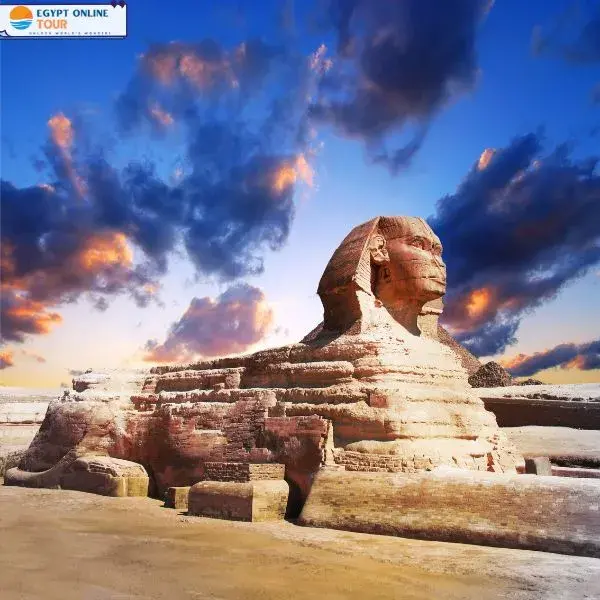
Legacy of Old Kingdom Innovations
The achievements of the Old Kingdom were interconnected, with advancements in one field often enhancing others. For instance, their knowledge of astronomy influenced pyramid alignment, while mathematical principles underpin construction techniques. These innovations not only shaped ancient Egypt but also laid the foundations for future civilizations.
The Old Kingdom remains a testament to human ingenuity, where creativity and practical knowledge came together to build a lasting legacy. From the pyramids to the solar calendar, their contributions continue to inspire awe and admiration, proving the enduring power of innovation and perseverance.
Ancient Egyptian Inventions Still Used Today
The ingenuity of ancient Egypt goes beyond its monumental pyramids and intricate hieroglyphs. Their practical and innovative creations laid the foundation for many tools and systems we use today. From advancements in writing to breakthroughs in hygiene, these contributions have had a lasting impact on human civilization. Below are the most remarkable ancient Egyptian inventions still influencing modern life.
Key Innovations from Ancient Egypt
Papyrus Paper
Egyptians made the first paper-like material from papyrus plants. This invention revolutionized record-keeping and laid the foundation for modern paper.
365-Day Calendar
They developed a solar calendar with 365 days, enabling better agricultural planning and inspiring today’s global calendar system.
Irrigation Systems
Advanced irrigation techniques, including canals and basins, controlled water flow for farming, forming the basis of modern agricultural practices.
Cosmetics and Personal Care
Egyptians created kohl eyeliner and perfumes, which remain central to beauty routines worldwide.
Surgical Instruments
Early medical tools like scalpels and forceps paved the way for innovations in surgery and healthcare.
Locks and Keys
The first pin-tumbler locks, made of wood, inspired modern security systems.
Mathematics
They introduced geometry and fractions, essential for architecture, engineering, and trade, forming the basis of modern mathematics.
Hieroglyphic Writing
One of the three major achievements of ancient Egypt was that hieroglyphs advanced written communication and knowledge preservation.
Sundials and Timekeeping
Sundials helped measure time, laying the groundwork for modern clocks and watches.
Bread and Beer Production
Egyptians refined techniques for baking bread and brewing beer, staples still enjoyed today.
Ancient Egypt’s remarkable innovations continue to shape our daily lives. Their contributions to writing, engineering, and personal care reflect timeless ingenuity. These achievements connect the past with the present, showcasing how human creativity transcends generations.
Read about: Pyramids were most popular during which of the following periods
Summary
Ancient Egypt’s architecture, writing, and agricultural achievements continue to amaze and shape our world. What are the three main accomplishments of ancient Egypt? Discover more about their remarkable innovations and their lasting impact. Dive into the wonders of their civilization and see how their legacy still influences us today. Ready to explore the incredible story of the past? Start your journey now and connect with the timeless brilliance of ancient Egypt! With our Egypt Classic Tours , which are designed to provide lifelong memories, you may choose from a variety of options and see the finest of Egypt. Book now your Egypt Tour Packages and start your journey!
Frequently Asked Questions
1 Why are the pyramids considered one of the greatest achievements? ▶
2 What made ancient Egypt’s agricultural advancements so important? ▶
3 Why is Giza's Great Pyramid so well-known? ▶
Popular Categories
Popular Posts

Top Alexandria Beaches You Must Visit 2026

What are the important holidays in Egypt?
